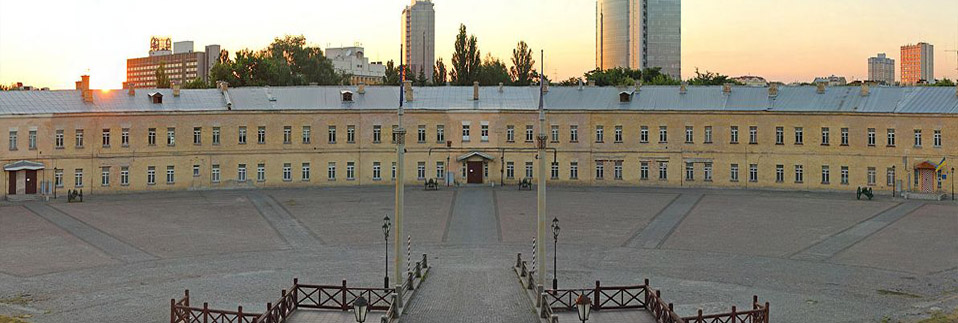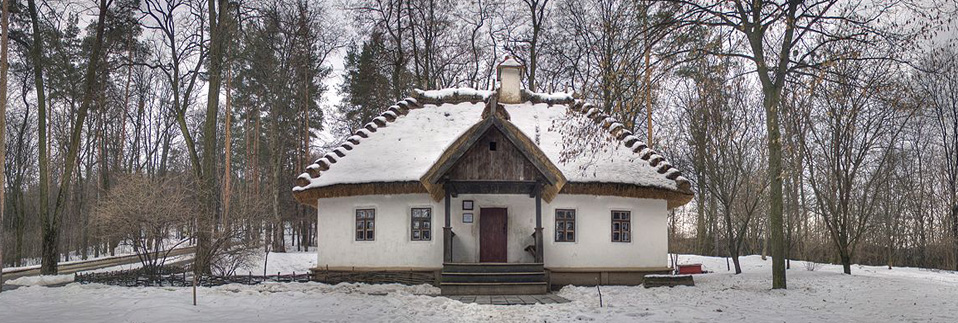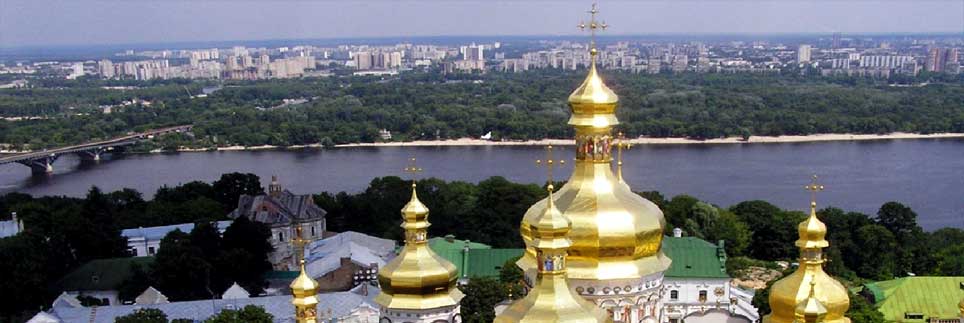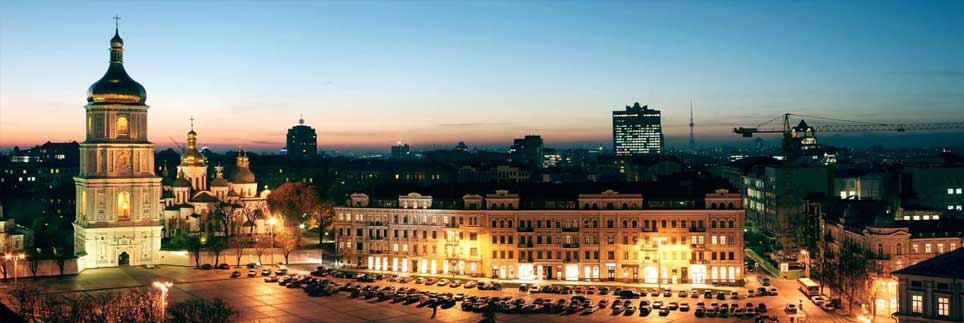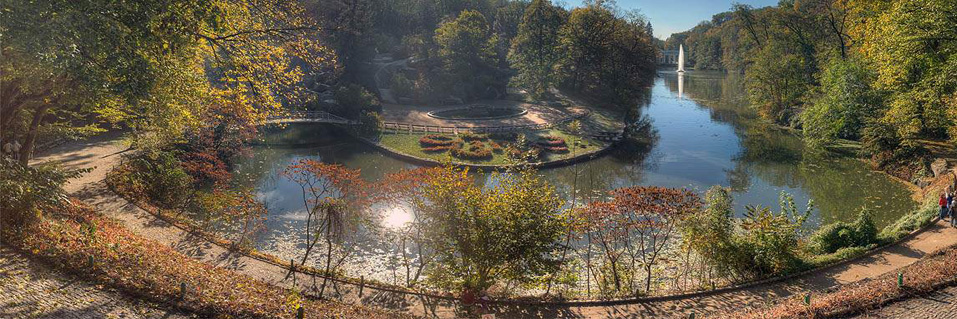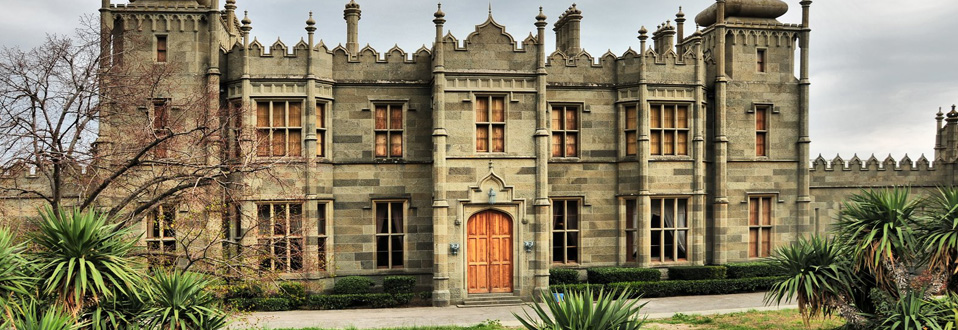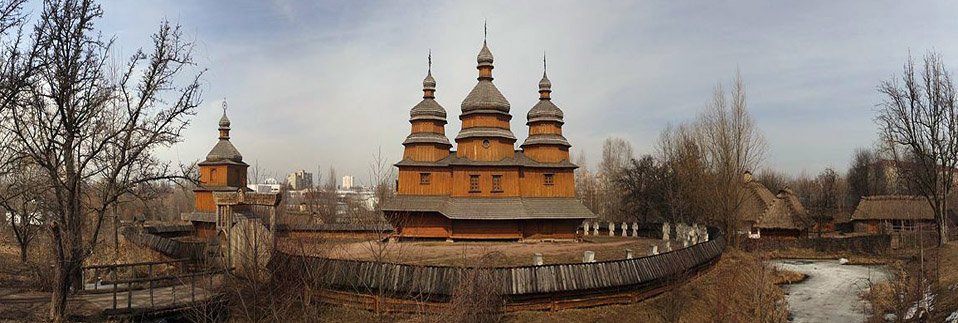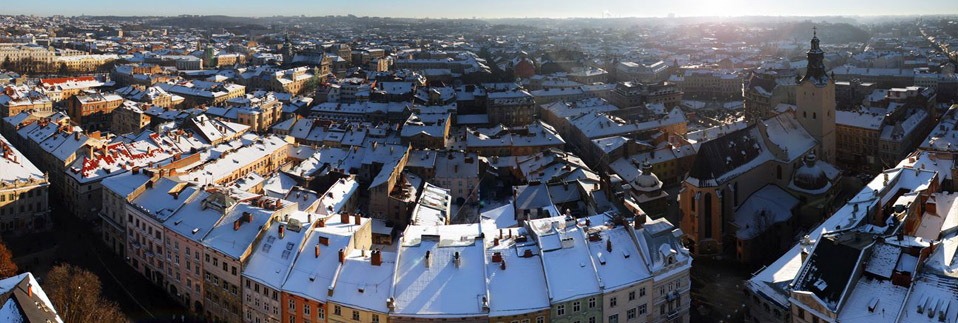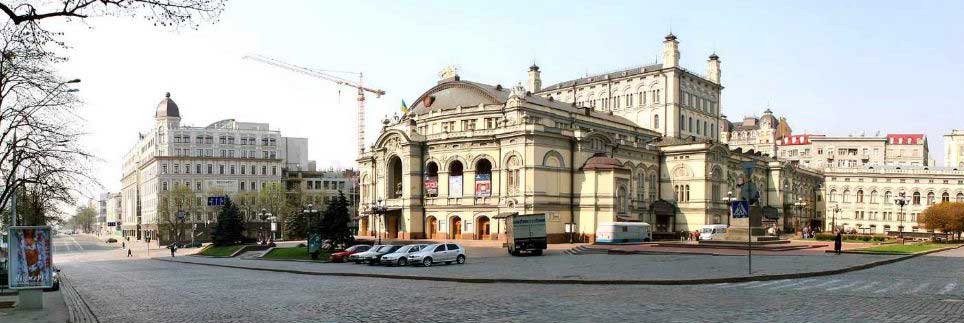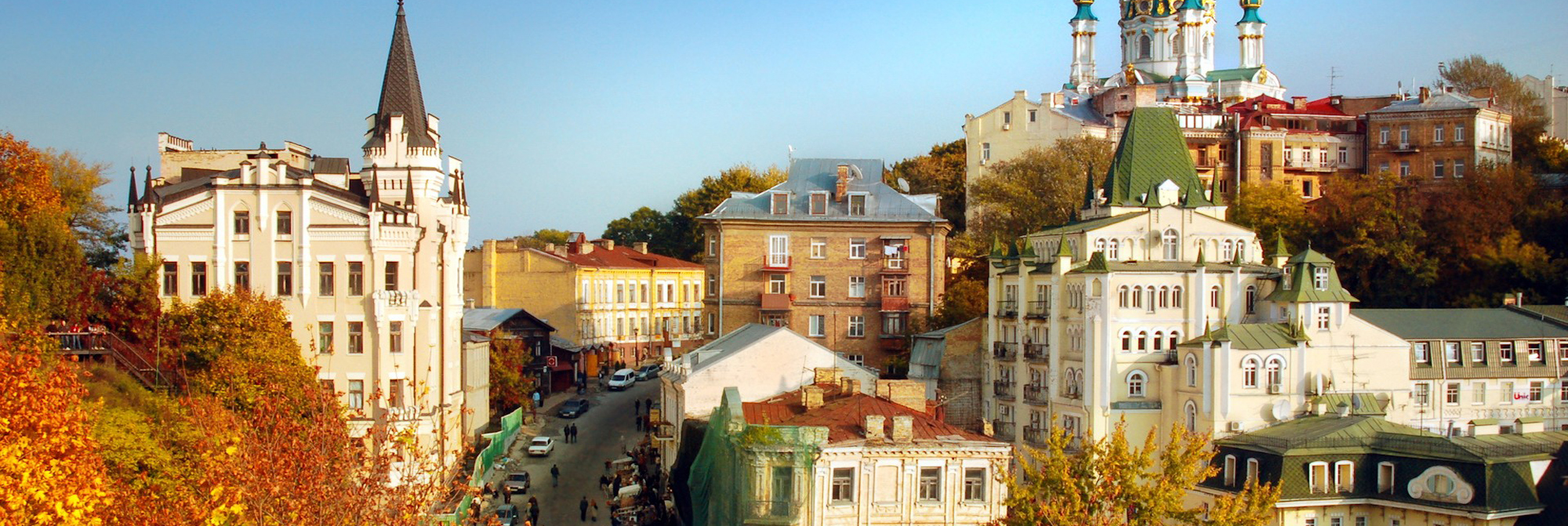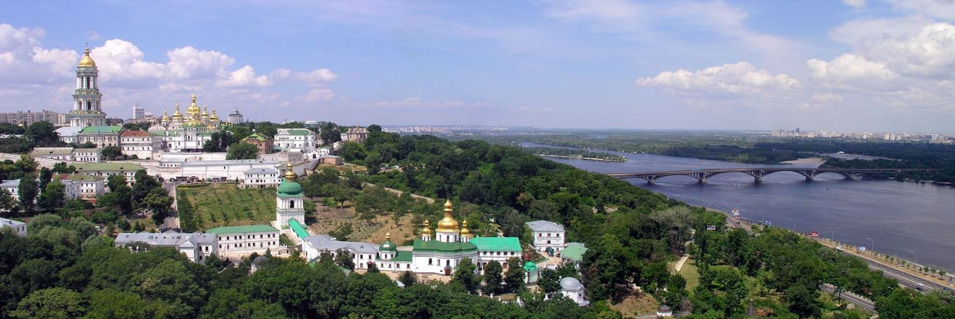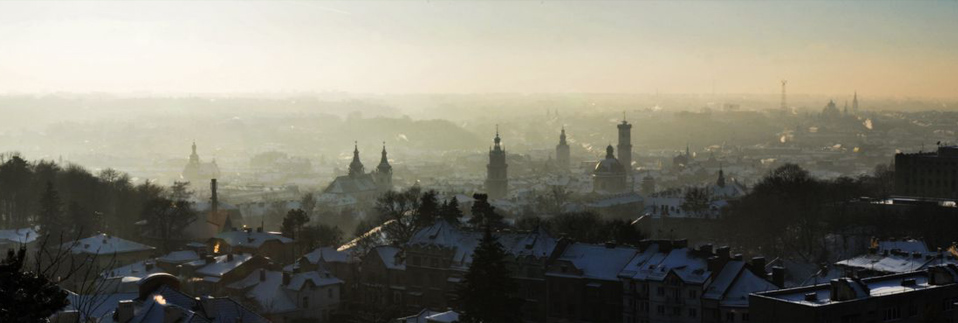Dnepropetrovsk
Dnepropetrovsk

The city is situated on the Dnieper river and is the third biggest city of Ukraine and one of the largest industrial centres of the country (592-km from Kyiv). The population is 1,186,000. Being the major Soviet rocket-building centre, the city for a long period was closed for the foreigners. In 1991 the city opened its gates to the tourists from all over the world. The local residents often call it in a short way “Dnepr”.
The history of the city is lost in the remote past. Even in the XIX c. the ancient tumuli were found on the territory of present Dnepropetrovsk. They were of the Bronze Age and of Scythian time. In the times of Kiev Rus State the territory of present city was often used like a temporarily shelter for the travelers to the south. In the 1550-ies the runaway peasants and Cossacks organized here near the Dnieper rapid (Kodaksky) their fortified settlement that got the name of “Sech” (abattis) and the Cossacks called themselves “Zaporozhian Cossacks” that meant “those who lived behind the rapids”.
In 1776 -1777 Russian Empress Catherine II decided to build here the Southern capital of the Empire. The Empress entitled her favourite Prince Grigory Potemkin (1739-1791) to implement this gorgeous plan. At the beginning it was planned to build the city on the territory where the present-day town Novomoskovsk is situated, but the site was the wrong one – it was in the lowland and often flooded, so the city was moved to the right hilly bank of the Dnieper. Official date of the city foundation is 1787. Famous Russian architects Claude Gherua, Ivan Starov, Gheste and Kozakov made the projects. The city was named after its “godmother’ Yekaterinoslav (glory to Catherine). The city grew very quickly and who knows how the city would look to-day if all these plans had been completed. But after the death of Catherine II her son Paul, who hated his mother, stopped to finance the construction and the city got a new name “Novorossiysk” (“New Russian town”). Catherine’s grandson, Tsar Alexandre I, in 1802 returned the name to the city but not the status of the Southern Capital. In 1820 on his way to the South poet Pushkin spent here almost three weeks.
The end of the XIX c. and at the beginning of the XX c. the intensive growth of the heavy industry in the city was recorded. In 1862 there were about 50 industrial enterprises and more than 22,000 residents. The workers of Yekaterinoslav were well organized and it was here that the first revolutionary underground organization of workers in Russia was formed in 1897. It started the organized revolutionary movement in the whole country that resulted in the revolutions in 1905 and 1917. The Revolution and the Civil War up to 1919 hindered the industrial development of the city. During 1918 the town’s name was “Secheslav “(The Glory for Sech).
Considerable progress was made in the 1930-ies. It was the time when big and top important industrial giants were constructed here. In 1926 the city was renamed “Dnepropetrovsk” in honour of Grigory Petrovsky, one of the Bolshevik leaders who was at the beginning of the Bolshevik movement in Russia (the monument to him is one of the best in the city). On the eve of the WWII it was a big and important junction of rail and water roads, it became a major industrial centre with a huge iron and steel industry based on iron ore from the nearby Krivoy Rog mines and coal from the Donetsk Basin. The city also had plants producing heavy machinery, chemicals, rolling stock, and food products.
The Germans occupied the city t the end of September 1941. Every big plant had been defended by the Red Army and their territories were the sites of bloody hand-to-hand combats. During the 26 months of the occupation the Germans killed 30,000 of civil population and more than 30,000 of war prisoners; 75,000 citizens were taken to German labour camps. It was very important for the Germans to launch the enterprise that had been destroyed by the retreating Red Army and special detachments of NKVD, but they failed. Local workers sabotaged the instructions of new officials and together with the partisan groups made these plans be impossible to be implemented. On leaving the city in 1943, the Germans took away a very impressive monument to Catherine II that stood in the centre of the city.
To-day Dnepropetrovsk is the biggest industrial centre of Ukraine. Out of its 215 enterprises 25 represent heavy industry that produces cast-iron, rolled metal, pipes, machinery, different mining combines, agricultural equipment, tractors, trolleybuses, refrigerators, different chemicals and many others. The most famous and the oldest (more than 110 years) is the Metallurgic Plant named after Petrovsky. The city also has big food processing and light industry factories. Recently many sowing and dress-making factories work for France, Canada, Germany and Great Britain, using the western technologies and materials. Dnepropetrovsk has also dominated in the space building industry since the 1950-ies; construction department “Yuzhnoye” and “Yuzhmash” are well known to the specialists all over the world.
Construction of the Metro was completed in late 1995.
Dnepropetrovsk is a big educational and scientific city. Diverse industrial potential of the city conditioned the specialization of local technical schools, institutes, universities and academies. The main attention is paid to the training of the specialists in mining and metallurgic industries.
Many famous people worked in Dnepropetrovsk. Certainly not all their names are known to the world, and such names as of Mikhail Yangel and Vladimir Utkin, the constructors of space ships, were of top secret. But one name is well known abroad – Leonid Brejnev (1906-1982), he was born in Kamenskoe (to-day Dneprodzerzhinsk). He headed the Communist Party organization of the region on the eve of the WWII and during the first years after the war. Among those who came out of Dnepropetrovsk is the second President of Ukraine Leonid Kuchma, who for a long time was the General Director of the most famous “Uzhmash” plant.
Often in the press one can read about the “Dnepropetrovsk clan” that predominates in the leading governmental structures of Ukraine. And this is true – Dnepropetrovsk with its enormous industrial, technical and financial resources was and continues to be the best school of personnel.
Dnepropetrovsk is famous for its theatres: Shevchenko Musical Drama Theatre founded in 1919 as the first national theatre of Ukraine, the State Academic Opera and Ballet House, the Gorky Russian Drama Theatre, the Theatre for children and Youth, the Puppet Theatre, the Theatre of One actor. The Organ and Camera Music House placed in the building of the former Bryansky Cathedral is the real carrier of the high aesthetic and spiritual culture in the music life of the city.
The city architecture is mixed - you can find old style Jewish houses of last century in contrast to the monumental Stalin architecture of the 1950-ies. The compact "old town" does not exist in Dnepropetrovsk anymore. Many historic buildings and churches were destroyed in the Second World War and in Stalin's communist times in the 1930s. However all of Central Avenue, some street-blocks on the main hill (the Nagornaya part) have been untouched for 150 years. An evening walk through those parts of the city is very pleasurable. Powerful industries preferred to construct the offices close to their main factories away from the centre of town. The central street of the city has the name of Karl Marx. It is a wide and long parkway, which stretches East to West through the central part of the city. It was founded in the XVIII century and parts of its buildings are the actual decoration of the city. The Karl Marx Prospekt is also the main trade artery of the city. There are plenty of shops, fanciest boutiques and cafes of different sizes and for different income levels. In the evenings the street is surprisingly full of people and the city guests. The guests of the city say that it has a wild night life.
Dnepropetrovsk provides wide possibilities for the sports development. Many Figure Skating fans know the name of the Gold Olympic winner in 1994 Oksana Bayul who was born in the city. The city has very strong volleyball and football (soccer) teams. The football Club “Dnepr” is constructing a new stadium for 31,000 spectators that will be one of top ones in Ukraine and is planned to be opened in 2007.
Being a big industrial city, Dnepropetrovsk is surprisingly green and in its own way beautiful city. First of all, the Dnieper River is a wonderful creation of nature that keeps the climate mild and the air fresh. From any of its seven hills you will find a beautiful view of the river, islands, parks, outskirts and hills. Small islands are full of green, small cafes and restaurants, canoes, white sails of yachts and boats. The water reservoir near the city is vast due to the two man-made lakes (Dneprovsky, 1932, and Dneprodzrzhinsky, 1964,) transformed the channel of the river and covered with water the former rapids. Five bridges overlap the width of the river and its numerous island and channels.
Walking down the hill to the Dnieper river, you will cross the large and the oldest Taras Shevchenko Park and approach the “Monastyrsky” Island (Monastery island). The history of this place dates to the remote past. In 870 it became a refuge place for the monks who travelled from Byzantium to Kiev. According to the church legend, St. Andrew, the “First called Apostle”, stayed here when he was preaching Christianity to Slavic tribes in the I-st century. Presumably in 957 Great Kiev Princess Olga escaped the storm and was sheltered by the Christians who lived on the island. Later, the Byzantine Bishop Grigory and monks built here a chapel to commemorate this rescue. Later, Great Kiev Prince Svyatoslav and then his son Prince Vladimir, who introduced Christianity into Kievan Rus in 988, stopped in the monastery on the way to Byzantium during their military campaigns against this Empire. In 1223, when the Slavs were defeated by the Tartars (battle on the river Kalka), the monastery was destroyed by the Tartars and the monks were killed. To-day one can see the new St. Nickolas church built on the island.
During the city tour one can learn more about the present day life of the city and its history. The tourists will be
taken to the oldest part of the city which is located on the hilly right bank of the Dnieper. To-day here is the centre of the city where the most interesting historical and architectural monuments are situated. Certainly one will see the former Grigory Potemkin’s Palace (1786-1790) and transformed into the Palace of Culture for students in 1961. Among other highlights are: the City Hall ("Duma") 1901, monuments to Pushkin (1901), Taras Shevchenko and Bogdan Khmelnytsky, St. Michael church (1807).
But the main architectural attraction of the city is the Transfiguration Cathedral. In 1878 during her travel to the South of the country Catherine II and Austrian Emperor Joseph II laid a foundation stone of the Cathedral that at the same time became the foundation stone of the city. It was planned to be the biggest in the world, even bigger than the Cathedral of St. Peter in Rome. The Cathedral is really big – it has 12 Communion tables and two side-altars – of Great Martyr Catherine and St. Joseph. To accelerate the construction Potemkin brought to Yekaterinoslav 12 Grenadier regiments. Special wood, brick and smith shops were constructed. Potemkin invited the best French architect Leroy, who turned frightened by the sizes of the cathedral and ran away. So, the cathedral was constructed in 1830-1835 by Russian architect Zakharov.
Being situated in the central part of the Ukraine, Dnepropetrovsk is an important rail and river roads junctions. Recently a comfortable high-speed train, connecting the city with Kiev, was put into operation. An International airport offers direct lines to and from Wine (Austria), Frankfurt on Maine (Germany), Istanbul (Turkey), Tel Aviv (Israel), Minsk (Byelorussia), Moscow (Russia) etc. The city has some nice hotels that have been reconstructed and refurnished recently.
 Art exhibitions and museums of Dnepropetrovsk are among the best in Ukraine. The Museum of Art is one of the oldest in Ukraine. It was opened in 1914 (spring), on the 100th anniversary of the birth of Taras Shevchenko, the national Ukrainian poet. Since that time the museum has accumulated a rich collection of European, Russian and Ukrainian art. Its collection comprises more than seven thousand exhibits including works by eminent European, Russian and Ukrainian painters. The collection of icons is nearly 250 items. The museum can boast for very valuable collection of drawings and graphics that make two thirds of its exhibits. Lovers of Nature will find the visit to the Zoological museum quite interesting.
Art exhibitions and museums of Dnepropetrovsk are among the best in Ukraine. The Museum of Art is one of the oldest in Ukraine. It was opened in 1914 (spring), on the 100th anniversary of the birth of Taras Shevchenko, the national Ukrainian poet. Since that time the museum has accumulated a rich collection of European, Russian and Ukrainian art. Its collection comprises more than seven thousand exhibits including works by eminent European, Russian and Ukrainian painters. The collection of icons is nearly 250 items. The museum can boast for very valuable collection of drawings and graphics that make two thirds of its exhibits. Lovers of Nature will find the visit to the Zoological museum quite interesting.
For visitors now the Rocket museum is one of the city highlights. Rockets are laid out in sections in the car park. Its exhibits tell about the contribution of Dnepropetrovsk into the Soviet space-ship and rocket constructing industry.
The largest and most popular is the Museum of History named for Dmitry Yavornitsky. Do not miss this visit that will help you to understand the glaring and peculiar history of the cultural heritage not only of the Dnepropetrovsk region but of the whole Ukraine. To-day the museum complex holds an exposition dating from the old times to this day and consists of four departments:
- Exhibition of the Museum of History. Its 10 halls contain about 220,000 items, including archaeological finds, relics of the Zaporozhian Cossacks, old prints of the XVI-XVII cc., numismatic, heraldic, ethnographic items etc. It was organized in 1849 on the basis of the private collections and its first director was famous scientist Yavornitsky. At the beginning it was located in the former Potemkin’s Palace and it was the first museum in the whole Yekaterinoslav area. As to the variety of the exhibits, artistic display and its enlightening activity the museum can compete with the best museums of the world (address: 16, Karl Marks avenue).
- Memorial house-museum of Yavornitsky was opened in 1988 and tells about the life of great historian academician Dmitry Yavornitsky (1855-1940). The house was constructed in 1905 (architect Branitskaya), in this house the scientist lived his last 35 years. The original interior has been preserved: hall, dining room, study and guest rooms. The exhibits - personal things, photos, books, manuscripts, documents, give you an idea about the life and activity of this versatile scientist. His wide interests are amazing: historian, archaeologist, and ethnographer, collector of folk poetry and arts, lecturer, writer. This really handsome and charming man attracted like a magnet the best brains of his time. His lectures in Warsaw and Moscow Universities about the history of Ukrainian Cossacks gathered full auditoriums. His house welcomed many famous scientists, writers, artists and actors. His friends called him “Cossacks’ Father”. Yavornitsky published more than 200 volumes of scientific books and articles. About 50 of his works are about the history of Ukrainian Cossacks. In 1902 he became the first director of the Yekaterinoslav museum. In 1929 he got the title of an Academician of the Ukrainian Academy of Sciences. He was among those who tried to save the Cossack heritage when the construction of Dneproges hydro-electric plant started in the early 1930-ies and the Cossack original territories with all the archaeological remnants were condemned to be buried under the water. In 1933 he was accused of Ukrainian nationalism and his works and his name were forgotten for decades. The year of 2005 was announced in Ukraine as a year of Dmitry Yavornitsky (150 years of his birth). (address: 5, Shevchenko square)
- Diorama “Battle for the Dnieper” brings us back to the heroic time of the liberation of the city from the Nazis. It was built for the 30th anniversary of the World War II (1975). The museum portrays the pictorial battle scene on the 840 square meters canvas, placed in a special building after the project of architect Zuev. The remnants of defensive installations, weapons, crossing facilities, special lighting and sound accompaniment make the effect of real presence on the battle field. It also has the cinema hall and exhibition halls (address: 16, Karl Marks avenue)
- Museum of «Literature of Pridneprovie” was opened in 1988 (“Literature of the Dnieper river areas” address: 64, Karl Marx avenue)
On October 28, 2003, a cornerstone of the Tkuma (revival in Hebrew) Holocaust Memorial Museum in Dnepropetrovsk took place. The Museum will be the first of its kind in the Former Soviet Union. It will be dedicated to promoting awareness of Holocaust history, supporting inter-ethnic tolerance, and reducing antisemitism in Ukraine through education, research, and the creation of a major Holocaust memorial. The museum will be attached to Dnepropetrovsk's main Synagogue. Since the fall of the Soviet Union, Dnepropetrovsk - with a population of more than one million, including 78,000 Jews in the metropolitan area - has come to be known to some as the Jewish capital of Ukraine. In a country once marked by a fierce strain of antisemitism, and later by the code of silence imposed by Soviet authorities, the Jewish community in this city has burgeoned during the last decade. The museum is expected to be opened in summer 2006.

To enjoy real authentic works of Ukrainian craftsmen one must go to Petrikovka - a settlement (5,000 pop.) on the Chaplynka river, 46 km from Dnepropetrovsk. This village has a very rich history and is well known far beyond the borders of Ukraine for its artisans who make unique paintings on paper, wood and metal.
The history of the village dates from the XVIII c. when some small winter Cossack settlement appeared here. The name of one Cossack was Petrik and already under this name the village was mentioned in the documents of 1756. At this time the church of Nativity was constructed, but later in the XIX c. it was replaced by a new one.
In 1774 a military garnizon quartered here. From the very beginning of its history the village was known for its industrious talented women who decorated the walls of the houses with beautiful flower paintings both inside and outside. They used natural organic paints, colored clay and soot. At the beginning of the XIX c. the village was known for its decorative chests, woven carpets, belts, colourful materials for Ukrainian national costumes.
In 1929 the needle-workers organized the first “artel” (organized group). Its fame spread round Ukraine. In 1958 a department of lacquered paintings on wood was opened here. The Petrikovka products got very high appraisals in different exhibitions and in 1961 all its shops were united into the factory of souvenirs.
Besides visiting the museum where the best samples are exhibited the visitors can observe a very delicate process of making these chef d'oevres and then buy them. Come and touch real Ukrainian art!
The town is situated 27 km to the North from Dnepropetrovsk predominantly on the right bank of the Samara River, which is one of the left confluents of Dnieper River. The first people settled here in the III c. B.C. The archaeologists found here the burial tumuli of the Bronze Age with the weapon, stone house utensils, different earthenware and ceramic vessels.
In the middle of the XVII c. there were several Cossack winter settlements. In 1670 in the mouth of Samara river St. Nickolas Pustyn (Hermitage) Monastery was constructed. Up to our days only St. Nickolas church and the cells that were constructed later in 1782-1786 survived and now they are under the reconstruction. In 1687 on the right bank of the river a fortress that was named Bogoroditsa (“Mother of God”) was built. Its main task was to protect the Southern borders of Moscow State from the Tartar raids. The fortress had a short life – in 1711 the borders of Russia were moved further to the North and it lost its importance.
In 1736 a new fortress was built on the site of the old one and it got the name of “Samara” fortress. Gradually near the fortress a settlement of free peasants (“sloboda”) appeared. It got the name of Novosselitsa (“New settlement”). During the existence of The New Sech, in 1734-1775, it became the centre of the Cossack fortified outpost. After the ruin of Sech Novosselitsa became the military fort of Poltava regiment.
In 1776-1777 Russian Empress Catherine II decided to build here the Southern capital of the Empire. The Empress entitled her favourite Prince Grigory Potemkin (1739-1791) to implement this gorgeous plan. At the beginning it was planned to build the Southern capital of Russian Empire here, but the chosen site was the wrong one – it was in the lowland and often flooded, so the big city was moved to the right hilly bank of the Dnieper and Novosselitsa was forgotten. When in 1783 Yekaterinoslav (Dnepropetrovsk) vicegerency was organized, Novosselitsa became its part; it got the town status and was renamed as Novomoskovsk (“New small Moscow”)
Good location accelerated the development of the town and its growth. In 1890 its population estimated 13,000. Some people were agrarians, some traders. At the beginning of the XIX c. some administrative buildings typical for this time were constructed. The vicinity of big industrial city of Yekaterinoslav gave an impact to the industrial development of Novomoskovsk. Gradually the town enlarged its industrial potential and now it is important industrial centre of the region. In 1932 the biggest metal rolling plant was constructed here. During the Soviet era some of its enterprises were military profiled. To-day it is an industrial town with the population of 73,000. Among its 124 enterprises are: the well known “Pipe Producing Plant” that manufactures steel pipes and domestic utensils, big aluminium plant, the plant of prefabs , dress making factory, big bakery.
The surrounding forests and beautiful river made Novomoskovsk attractive for summer camps, different sport competitions and tourists. The local lore museum is small but in its own way interesting and informative. But the main attraction of the town that made it well-known is the Holy Trinity Church. It was constructed on the request of the Cossack community by talented local master Akim Pogrebniak in 1775-1780. It is wooden, without any nails, cross-planned, in Baroque style with excellent proportions (27 m x 27 m x 35 m). The church is surmounted by nine elegant cupolas. This type of a church is nowhere found on the territory of the Central and Left-bank Ukraine and it is the only one nine-domed wooden church in the whole Ukraine. Later at the beginning of the XIX c. a bell tower was added. Come and see this architectural miracle by yourself!
One of the biggest industrial centres of the Dnepropetrovsk regions is Nikopol. It is a rail terminus and a river port on the right bank of the man made Kahovka water reservoir, 121 km South from Dnepropetrovsk. Its population to-day is about 150,000.
The history of the town is inseparable from the history of the region. People settled here in the Neolithic Age, during the Copper and the Bronze Ages cattle-breeding and agricultural tribes had their settlement not far from the to-day’s town. In the VII c. B.C. this area was inhabited by the Scythian tribes that were followed by the Sarmatians in the II c. B.C. Then came the Huns in the IV c, in the VI - VII cc the Avars, Bulgars (proto-Bulgarians) and Hozars. For a long period this vast steppes were invaded by the cattle-breeding tribes of Pechenegs (end of the IX c.), then at the beginning of the XI c the Turkic tribes came, in the mid-XI c. they were pushed out by the Polovtsy. Numbers of graves in the vicinity recall the battles which were fought for the possession of this important strategic point. One of them, close to the town, contained, along with other Scythian antiquities, the well-known precious vase representing the capture of wild horses.
Nikopol stands on the site of one of the earliest trade routes and strategic crossing points over the Dnieper. In old time here was the middle of the “salt” route of the “chumaks” (salt-carriers) who traveled to Crimea for salt in the XV-XVIII cc. For the first time this area was mentioned in the diary of German Emperor E. Liasota. At the end of the XV c. the lands lower of the Dnieper rapids were occupied by run-away peasants that organized here their fortified camps that got the names of “Sech” (Ukr. Sich).
The legend says that at the beginning of the XVI c. a Cossack, named Nikita, settled on the elongated peninsula between two arms of the Dnieper river and organized here ferry river crossing. Here the banks were low and marshy, and had been for centuries one of the places where the middle Dnieper could most conveniently be crossed. The place got the name of “Nikitin Rog” (Ukr. Mykytyn Rih, that means Nikita’s Horn). At the beginning of the XVII c. a village Nikitino was formed here.
In 1637-1652 in the central part of to-day’s town, a Cossack “Nikitinskaia” Sech was located, and here in 1648 Bogdan Khmelnitsky was proclaimed the Hetman of Zaporozhian Cossacks that made him the Hetman of Ukraine. The defeat of the Polish garrison by the Hetman’s insurrectionists launched the national-liberation war against Poland (1648-1654). In 1954 a memorial obelisk in honour of this Nikitinskaia Sech and monument to Bogdan Khmelnitsky were unveiled in Nikopol. After Russians destroyed the Zaporozhian Sech in 1775, they built a fort nearby, called Slaviansk. The settlement that grew up around it was named Nikopol in 1782 - “the city of victory” in Greek.
A new life of the town began in 1883 when not far from the town the manganese ore was found (on the river Solionaia).it still is the largest manganese-ore fields in the world. By 1900 three new big plants appeared in Nikopol: cast-iron and copper foundry, agricultural machinery and machine-building plants. The population was multinational: Ukrainians and Russians worked at the plants and Mennonites and Jews carried on agriculture and shipbuilding. Nikopol was one of the chief places on the lower Dnieper for the export of corn, linseed, hemp and wool. During the war when the town got severe damages 8 thousand Jews, who had not been evacuated, were killed in 1941-1943, a monument to them was erected in the town.
The places of interest are the church of Nativity of the Virgin Mary (1812-1820), built in Classic style with well preserved paintings of the XIX-XX cc. and recently built the Cathedral of Transfiguration. In the Museum of local lore one can learn more about the town’s history.
Nikopol Industrial enterprises produce metal alloys, ferroalloys, pipes, cranes, building materials, food products and consumer goods. In the 1930-ies the biggest in the USSR pipe plant was built here. To-day the Nikopol “Works of Stainless Pipes” makes over 1,000 types of pipes from over 60 stainless steel brands, its products are exported all over the world. To-day the manganese ore is extracted and concentrated near the town of “Marganets” (Manganese).
Nikopol district is regarded as very promising in gold output. Here, gold is deposited next to silver, zinc, lead, copper, platinum. According to the experts, high gold output can be expected following additional geological prospecting and exploration operations, through mining at big depths. In Nikopol district, the content of this metal in a ton of rock is higher than the relevant indicators of the world-famous gold deposits of the South African Republic and Alaska.
In 1955-1956 Kahovka Hydropower station was constructed and the biggest along the Dnieper water reservoir came very close to the town. To protect the central part of Nikopol a dam-embankment was constructed. Across the river one can see the Zaporozhian Atomic plant which is located on the left bank of the river.
This second biggest city after Dnepropetrovsk lays 130 km to the South from the capital of the region. To-day its population estimates 770,000. It stretches for 50 km along the Ingulets river and its tributary Saksagan. As to the territory (420 square kilometres) this city is second after Kiev. The place, where the rivers meet, looks like a “curve of a horn” – “Krivoy Rog” (Ukr. Kryviy Rih). Founded by Zaporozhian Cossacks in the XVII c., the city remained a small settlement as late as the 1780-ies. For the first time it was mentioned in 1775 as a post-station along the mail-delivering road. In 1820-1850 it was turned into a military outpost.
The exploration of the ores started here in the XVIII c. before a permanent settlement was built. In 100 years well known archaeologist, local lore researcher Alexander Paul organized here examination of local ores. He invited Russian and German scientists who tested the ore–casting in Silesia and St. Petersburg. This initiative resulted in the formation of the French “Society of Krivoy Rog ores” in 1880. In a year the first mine started the ore extraction and it was the beginning of large scale exploitation of the iron-ore deposits. These deposits are unique because of very high percentage of pure ore in the rock – up to 65%.
The rail road that connected this ore basin with Donbas coalfield and other industrial districts on the left bank of the Dnieper (1881-1884) stimulated the industrial development of Krivoy Rog. Foreign and Russian businessmen with rich investments flooded here.
On the verge of the XIX- XX cc. 79 mines worked in Krivoy Rog, it left behind the Ural ore production and ranked top in Russia. The city eventually sprawled North 30 km in a narrow strip along the ore deposits. In 1941, during World War II, Krivoy Rog and its mines were taken by German troops. The city suffered severe damage by the time when the Soviet Army regained control in 1944.
Krivoy Rog is typical industrial city, without any architectural monuments and historical sites but with typical Soviet type monuments. With the revival of the religion in the last two decades some new temples have been constructed.
The city centres around its steelworks and mines. There is something bewitching and phantasmagoric in watching how the small trucks, filled with ore, climb the quarry cliffs that are more than one kilometre deep. The main city’s industries are specializing on metallurgical products. Krivoy Rog Metallurgical Plant is famous in the whole world by its production of steel and cast iron. In and around the city are several ore-enriching and pelletizing plants to support the still-expanding ironworks and steelworks. Terny, which was annexed to Krivoy Rog in 1969, has a major uranium mine. Other industry includes coking and machine building, especially mining machinery. The city produces cement, diamond drills. Timber working, food and light industry are also developed. A canal brings additional water supplies from the Kahovka Reservoir on the Dnieper river.
This industrial giant surprisingly has many green parks, lawns, other places of rest, especially on the picturesque river banks. Some people go boating on the river Ingulets in good weather, and fishing is very popular.


